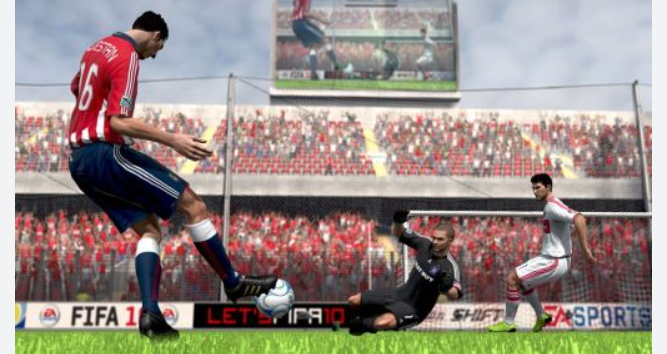“Playing video games can make you a better driver.” This statement is reminiscent of games like Gran Turismo or Forza Motorsports. Sure, these games can teach players the mechanics of driving, especially using steering wheels and pedal controls, but are they the best for improving driving skills?
Ironically, first-person shooters like Call of Duty provide more benefits to drivers than driving games.
One of the most obvious and frequently cited positive effects of playing video games is improved eye-to-hand coordination. It has become a stereotype in debates about the positive and negative effects of playing video games and is still hotly debated, although it seems like common sense.
Gaming has come a long way from the single joystick, single button days of the Atari 2600. Players will have to deal with gamepads with two joysticks and 12 or more buttons.
Having grown up through the development of controllers, some gamers probably find using modern devices effortless because they have been using these complicated input mechanisms all their lives. Your eye-to-hand coordination is already conditioned. But is this directly related to gambling, or is it just an environmental factor?
According to a 2014 study by the University of Toronto, playing action-intensive video games such as Call of Duty or Assassin’s Creed did not reliably improve sensorimotor control (eye-to-hand coordination). However, it improved sensorimotor learning, meaning players could perform tasks with a “consistent and predictable structure” better than non-players.”
The researchers tested this by having the two groups hold a cursor inside a white square while it was moving on a computer screen. At first, both groups performed equally well. While the participants continued to practice, the players showed a much better and faster improvement in holding the cursor in the square than non-players.
Holding a cursor in a square on a computer screen might not work well to make a better driver, but it does. It’s not about the action on the screen but about what is going on in the brain. It all depends on cognitive functions and visual acuity. Recognizing that the square has changed direction and then changing the course of the cursor before it leaves its limits directly refers to situations when a driver needs to make a split-second decision to avoid an accident.
The 2014 Toronto study is one of many evidence that Call of Duty and similar games can improve driving skills. Professor of the brain and cognitive sciences Daphne Bavelier at the University of Rochester has spent most of her time studying the cognitive effects of games and has some interesting insights into the effects of playing action video games on gamers.
In a 2012 TEDx talk (see below), Dr. Bavelier debunked a long-held myth that video games harm a player’s eyesight. It may be intuitive to think that excessive time in front of the screen would interfere with your vision, but Bavelier says this is simply false. She and her team measured vision in the laboratory of gamers and non-gamers. The former consistently had better vision than the latter – even those who played up to 15 hours a week tested better vision than 20/20.
Players have not only better visual acuity, but also a sharper perception of different shades of gray. Dr. Bavelier compares this with an example of driving in fog.
“The other way players are better is by dissolving different shades of gray,” Bavelier said. “Imagine that you are driving in a fog. This makes the difference between seeing the car in front of you and avoiding the accident or getting into an accident.”
Another myth that contradicts their findings is that games lead to attention problems and greater distractibility. Scientists have been studying attention for decades, and there are many standard tests to measure it in a quantifiable way.
Bavelier found that people who play Call of Duty have far better attention than non-gamers. A simple test they used was to show colored words to the test subjects and ask them to indicate the ink color of each word as soon as they appeared. Some words led to a cognitive conflict. For example, the word blue appears in red ink. The results showed that the players could resolve these conflicts much faster than those who did not play.
Another attention test involves tracking several moving targets. The average person can watch about three or four objects at once. Action video game players have a wingspan of about six to seven. These results are relatively predictable considering what it takes to play action games like Call of Duty, especially in frantic multiplayer games. It’s also good since we have to keep so many browser tabs open to having a chance at a new graphics card these days.
Attention is a critical attribute when driving. Just think about all the things that you need to pay attention to when driving at the same time – the cars in front, behind, and next to you; the children playing near the road in front of you; the color of the traffic light; your speed; the speed of cross traffic when approaching a green traffic light. There are many things that you need to focus on while driving. And laboratory tests show that action gamers are very good at this.
Bavelier’s research further confirms the practical test results with brain imaging. There are three areas of the brain that regulate attention. The parietal lobe controls the alignment of attention. The frontal lobe maintains attention. After all, the anterior cingulum controls how we assign concentration and resolve conflicts.
“If we do brain imaging now, we find that all three of these networks are actually much more efficient in people who play action games,” Bavelier said.
However, we again resort to whether these results were directly related to playing games or just related to common environmental factors. Fortunately, Bavelier also considered causality, which is easy to test in the laboratory.
Bavelier and her team conducted a controlled training study to establish causality. What they did was have the participants take cognitive tests at the beginning. Then the subjects would play 10 hours of action games over two weeks in 40-minute sessions. The subjects then took the same cognitive tests, and the results showed that not only did they perform better, but the improvements were still present five months after training.
Tracking the brain activity of video game players is a big part of most studies. Picture: Josh Cassidy
The training tests show two things. First, they prove the causality between visual and cognitive improvements when playing video games like Call of Duty. Common environmental conditions do not cause the positive effects among players. Secondly, it shows that training your brain in these games has lasting effects.
Another study from Shanghai in 2016 showed that playing high-action titles physically rewires the brain, so the benefits are at least semi-permanent. The researchers wanted to know if playing video games improves practical driving skills. They also wanted to determine if the type of game played a role.
They tested the participants with a driving simulator. One group played action games for 5 to 10 hours, while the other played slower ones. The study found that the action players performed significantly better in subsequent simulator tests than the non-action players.
“Our research shows that playing easily accessible action video games for just 5 hours can be an inexpensive tool to help people improve important visuomotor control skills for driving,” said researcher and co-author of the article Li Li from New York University Shanghai.
The researchers used Mario Kart and Rollercoaster Tycoon for action and non-action training, respectively. The driving simulator was set up so that the participants drive a car in one lane while compensating for crosswinds that affect the car’s behavior.
Tracking the brain activity of video game players is a big part of most studies. Picture: Josh Cassidy
The training tests show two things. First, they prove the causality between visual and cognitive improvements when playing video games like Call of Duty. Common environmental conditions do not cause positive effects among players. Secondly, it shows that training your brain in these games has lasting effects.
Another study from Shanghai in 2016 showed that playing high-action titles physically rewires the brain, so the benefits are at least semi-permanent. The researchers wanted to know if playing video games improves practical driving skills. They also wanted to determine if the type of game played a role.
They tested the participants with a driving simulator. One group played action games for 5 to 10 hours, while the other played slower ones. The study found that the action players performed significantly better in subsequent simulator tests than the non-action players.
“Our research shows that playing easily accessible action video games for just 5 hours can be an inexpensive tool to help people improve important visuomotor control skills for driving,” said researcher and co-author of the article Li Li from New York University Shanghai.
The researchers used Mario Kart and Rollercoaster Tycoon for action and non-action training, respectively. The driving simulator was set up so that the participants drive a car in one lane while compensating for crosswinds that affect the car’s behavior.
Read More: Call of Duty Modern Warfare 2 review: Is the 2022 CoD game worth it?







